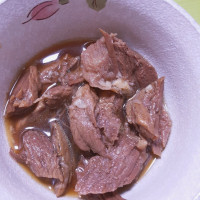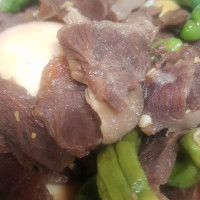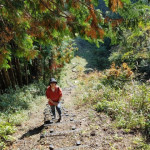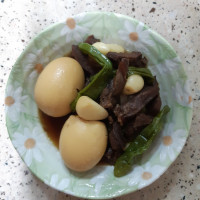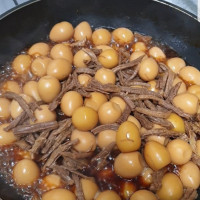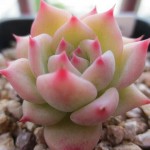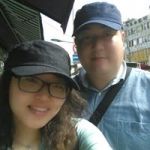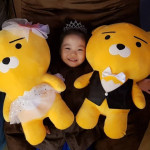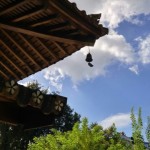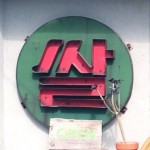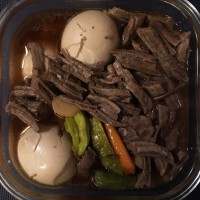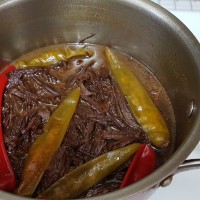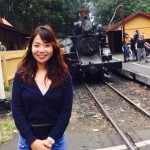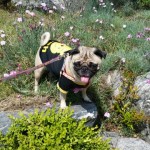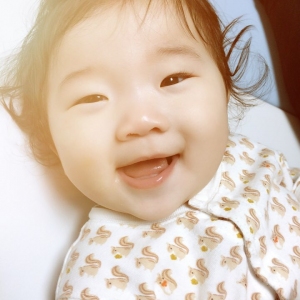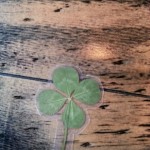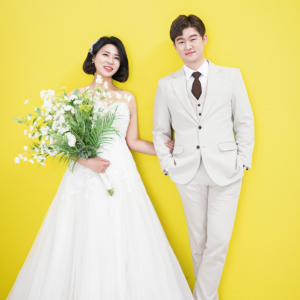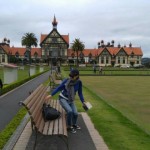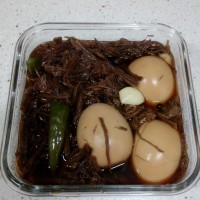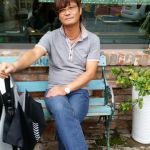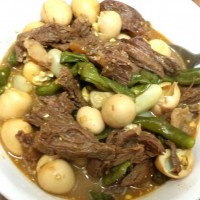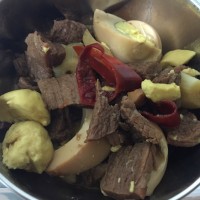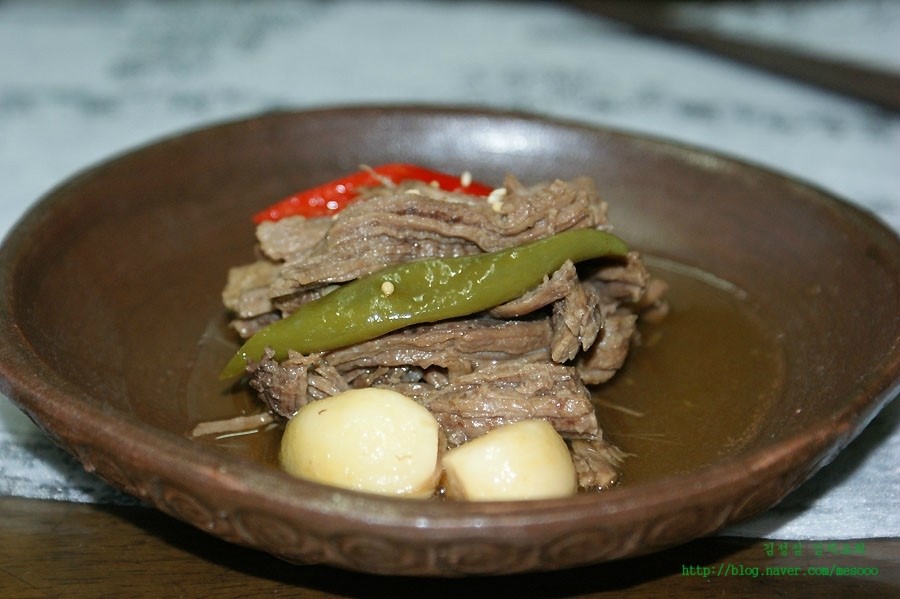
How to make delicious beef jangjorim
Here's how to make beef jangjorim, which is not salty or tough.
3 serving
Within 60 minutes

김성심김치요리1
- Ingredients
-
-
Beef400g
-
Cheongyang red pepper6ea
-
Red Pepper3ea
-
Garlic18piece
-
leek1/2piece
-
bay leaf2ea
-
onion1/2ea
-
Whole pepper20piece
-
Ginger1piece
-
Beef4cup
-
thick soy sauce6spoon
-
Korean style soy sauce3spoon
-
brown sugar1spoon
-
Cheongju2spoon
-
grain syrup1spoon
-
- Cooking Steps
-
STEP 1/13Peel and slice ginger.
 STEP 2/13Use the small ones for Cheongyang red pepper and red pepper as they are, and cut them in half if they are large.
STEP 2/13Use the small ones for Cheongyang red pepper and red pepper as they are, and cut them in half if they are large.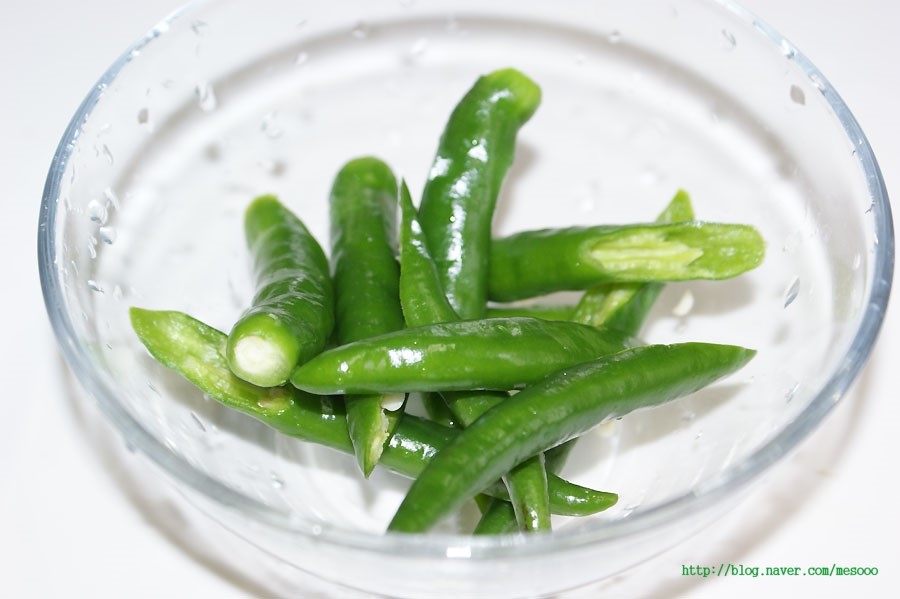 STEP 3/13Cut the green onions into appropriate lengths.
STEP 3/13Cut the green onions into appropriate lengths. STEP 4/13Peel and wash the onions and cut them into quarters.
STEP 4/13Peel and wash the onions and cut them into quarters.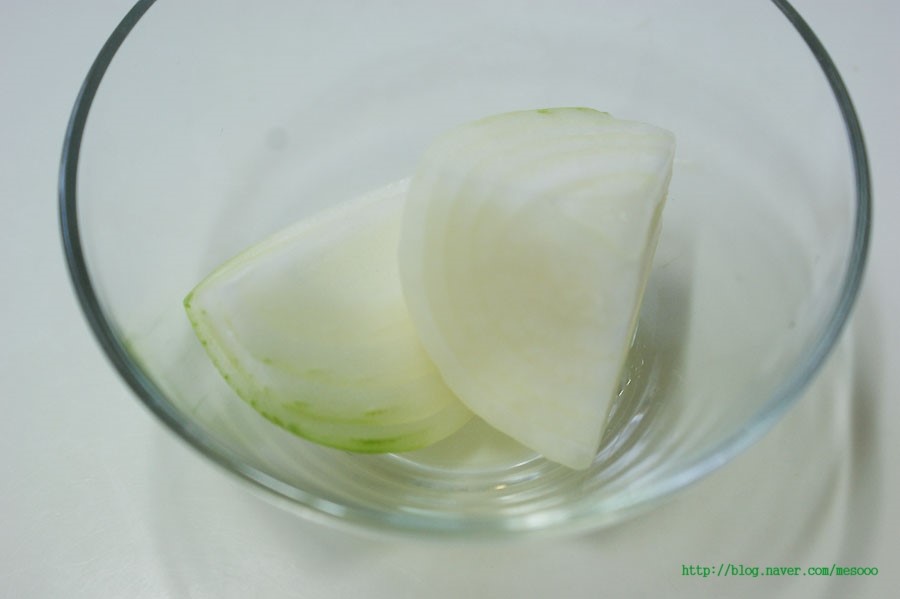 STEP 5/13Wash the garlic, too.
STEP 5/13Wash the garlic, too.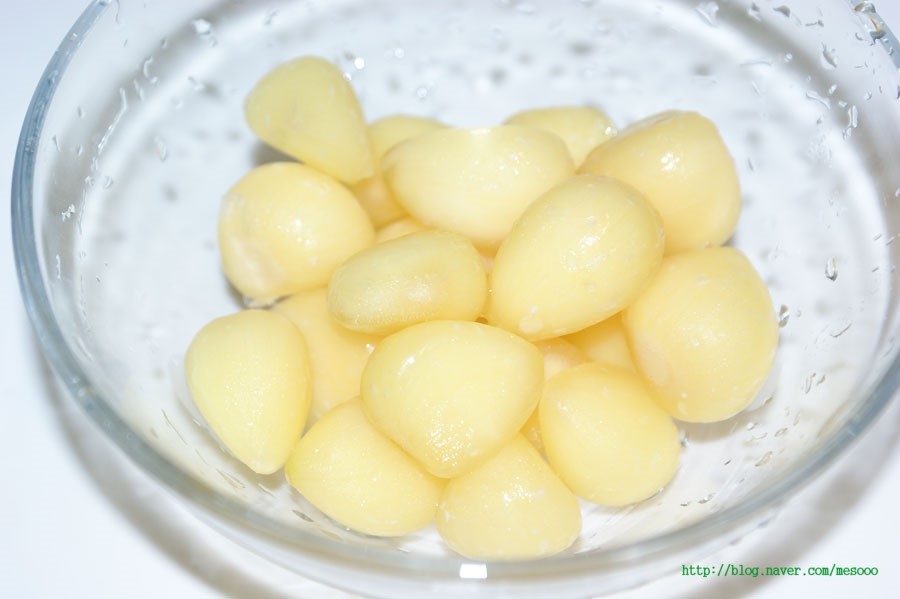 STEP 6/13Blanch beef in boiling water and rinse it in cold water with a sieve.
STEP 6/13Blanch beef in boiling water and rinse it in cold water with a sieve.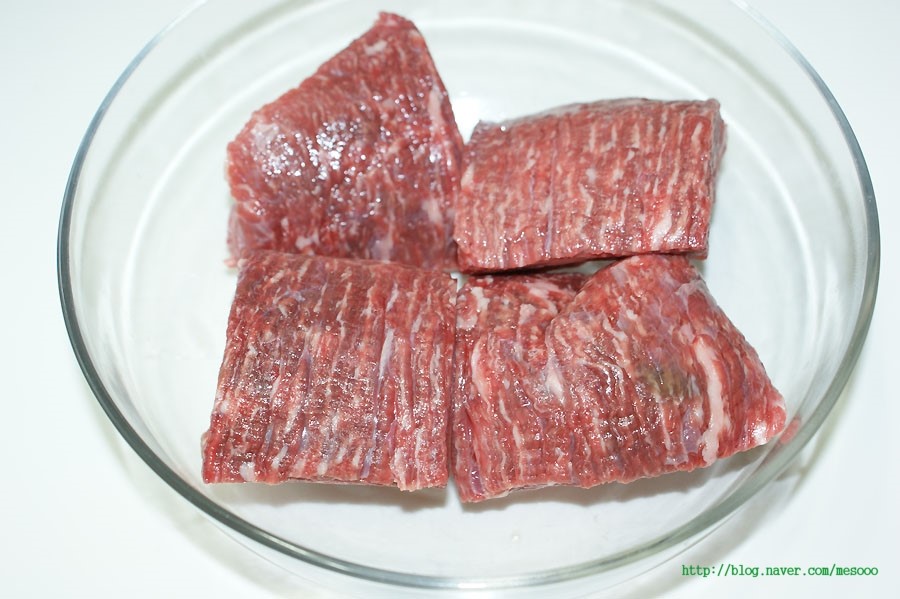 STEP 7/13Pour enough beef to soak (about 8 cups 1600cc), add 1/2 onion, 1/2 green onion, 2 bay leaves, 20 whole pepper, and 1 ton of ginger, and boil over low heat for 30 to 40 minutes. At this time, you have to open the lid and boil it over medium heat to soften the meat. Remove any impurities that come to mind in the middle.
STEP 7/13Pour enough beef to soak (about 8 cups 1600cc), add 1/2 onion, 1/2 green onion, 2 bay leaves, 20 whole pepper, and 1 ton of ginger, and boil over low heat for 30 to 40 minutes. At this time, you have to open the lid and boil it over medium heat to soften the meat. Remove any impurities that come to mind in the middle.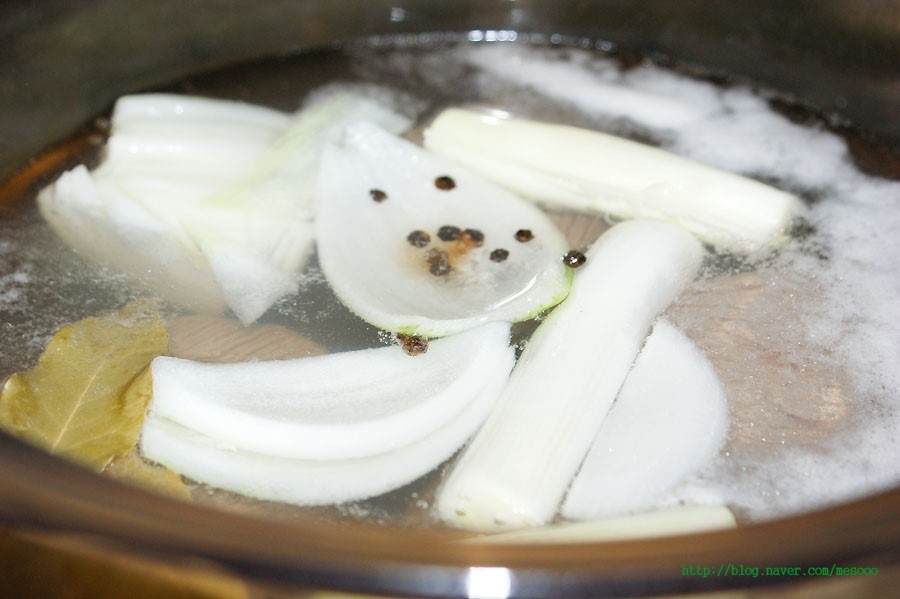 STEP 8/13When boiled, remove the beef and remove the rest of the ingredients. Don't throw away the broth because it's used for jangjorim. If you want to make a clean broth without oil, put it in the refrigerator and remove the oil when it hardens.
STEP 8/13When boiled, remove the beef and remove the rest of the ingredients. Don't throw away the broth because it's used for jangjorim. If you want to make a clean broth without oil, put it in the refrigerator and remove the oil when it hardens.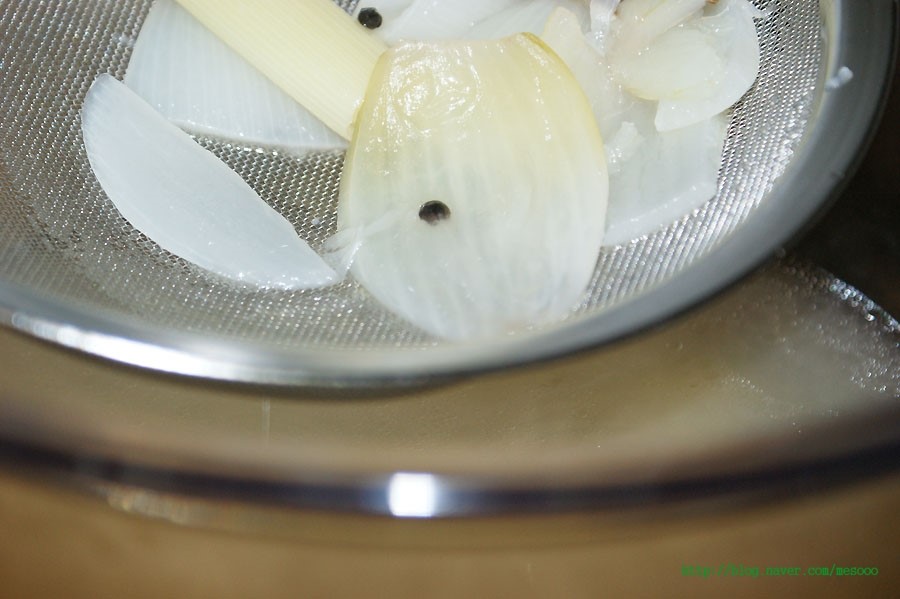 STEP 9/13Here, if you season the beef with soy sauce when it is not fully cooked, it will no longer be soft and tough. Make sure it's fully cooked.
STEP 9/13Here, if you season the beef with soy sauce when it is not fully cooked, it will no longer be soft and tough. Make sure it's fully cooked.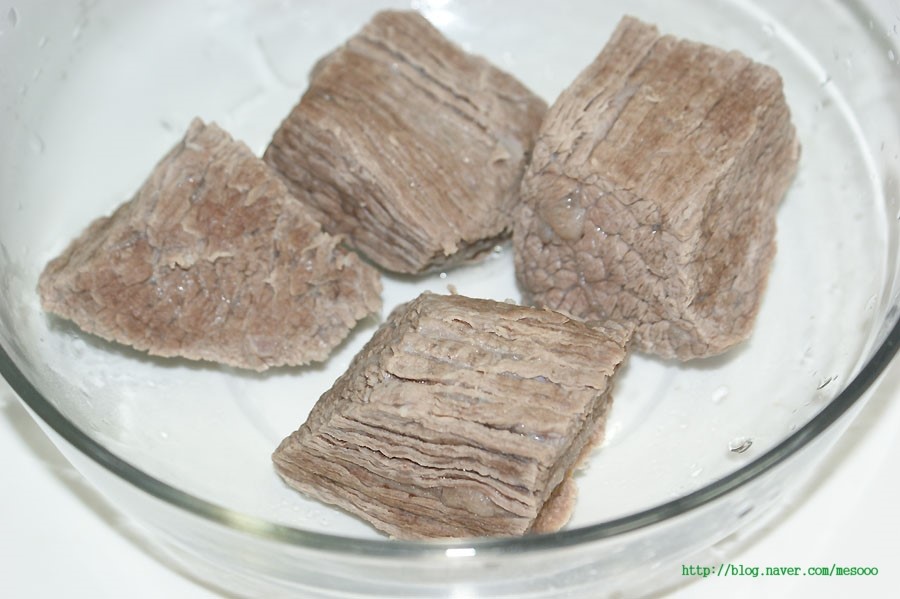 STEP 10/13Tear the beef to the grain.
STEP 10/13Tear the beef to the grain.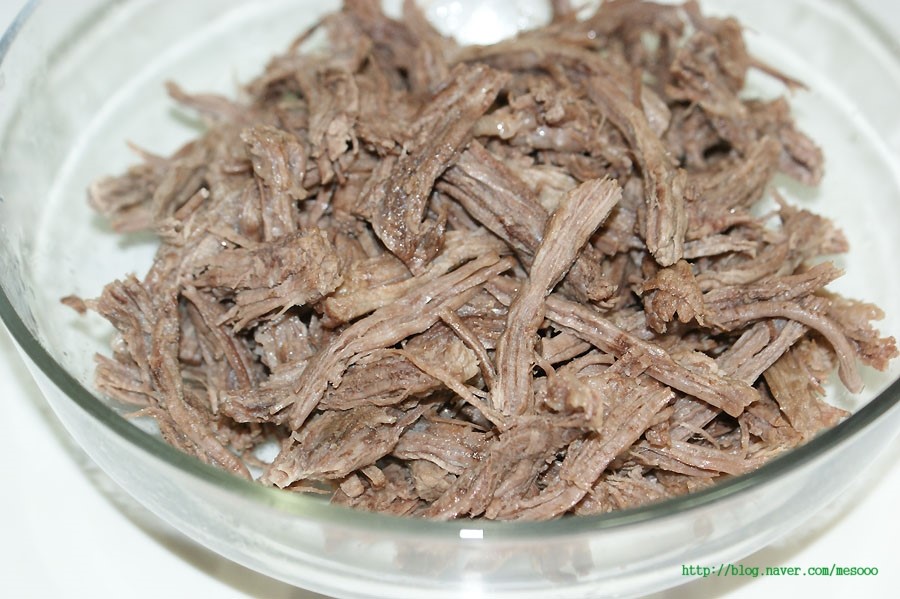 STEP 11/13Add 4 cups of beef boiled broth (800cc), 6 spoons of deep soy sauce, 3 spoons of soy sauce, 1 spoon of grain syrup, 1 spoon of brown sugar, and 2 spoons of refined rice wine. If you use soy sauce and soy sauce together, it adds to the flavor.
STEP 11/13Add 4 cups of beef boiled broth (800cc), 6 spoons of deep soy sauce, 3 spoons of soy sauce, 1 spoon of grain syrup, 1 spoon of brown sugar, and 2 spoons of refined rice wine. If you use soy sauce and soy sauce together, it adds to the flavor.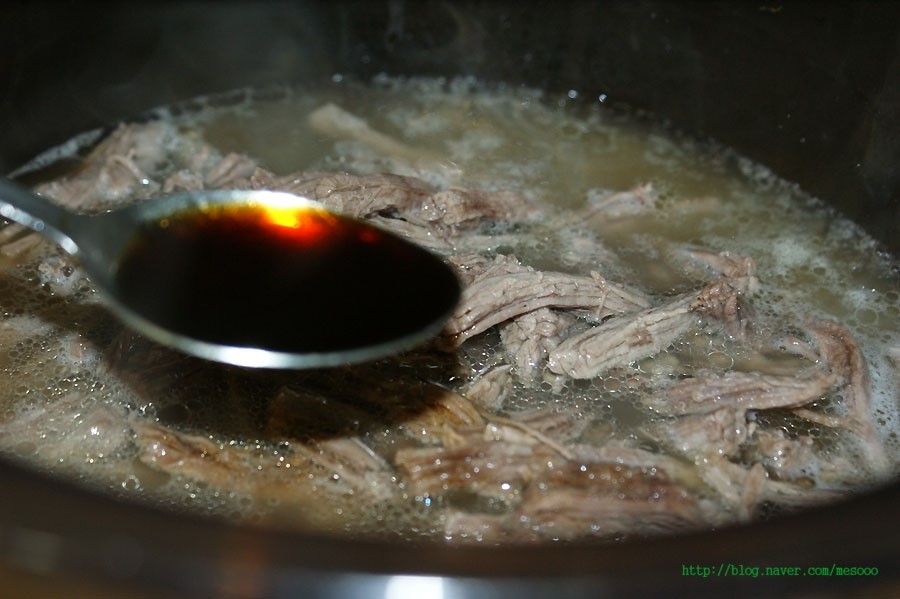 STEP 12/13At this time, put Cheongyang red pepper, red pepper, and garlic together and turn off the heat when the soup boils in half over medium low heat. Don't just look at the amount of soup here, taste it and make sure the beef is seasoned well. Add Cheongyang red pepper, red pepper, and garlic from the beginning and boil them, so it's good to add them 5 minutes beforehand.
STEP 12/13At this time, put Cheongyang red pepper, red pepper, and garlic together and turn off the heat when the soup boils in half over medium low heat. Don't just look at the amount of soup here, taste it and make sure the beef is seasoned well. Add Cheongyang red pepper, red pepper, and garlic from the beginning and boil them, so it's good to add them 5 minutes beforehand.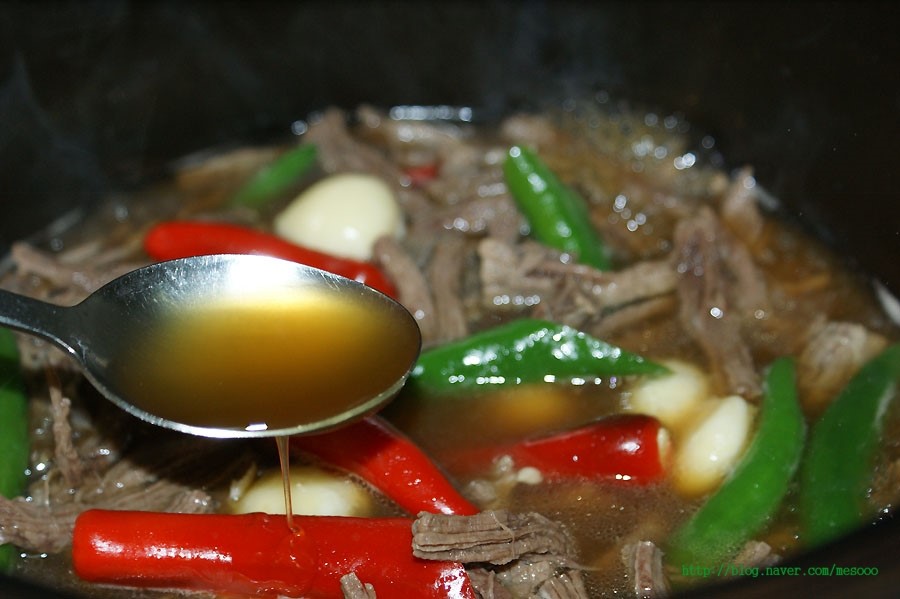 STEP 13/13It'll taste better if you heat it up in the microwave for about a minute.
STEP 13/13It'll taste better if you heat it up in the microwave for about a minute. You can use red bean sesame meat, rump meat, and brisket for the braised soy bean paste.
You can use red bean sesame meat, rump meat, and brisket for the braised soy bean paste.
- Cooking review
-
4.82score
-
 744*****scoreThanks to you, I made delicious side dishes I added quail eggs^^2024-02-15 16:16
744*****scoreThanks to you, I made delicious side dishes I added quail eggs^^2024-02-15 16:16 -
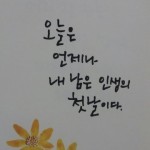 608*****scoreI always cook like this It doesn't smell bad and has a clean taste I've been looking for a rash2023-08-16 21:16
608*****scoreI always cook like this It doesn't smell bad and has a clean taste I've been looking for a rash2023-08-16 21:16 -
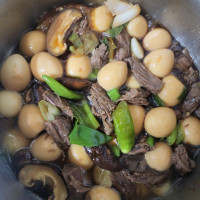 748*****scoreNow I can taste the proper braised beef.I always made boiled quail eggs or egg sauce, but the meat is seasoned well, the soup is spicy, and it's refreshing, so it's so delicious^^ I've never mixed rice with soup before2022-12-08 18:41
748*****scoreNow I can taste the proper braised beef.I always made boiled quail eggs or egg sauce, but the meat is seasoned well, the soup is spicy, and it's refreshing, so it's so delicious^^ I've never mixed rice with soup before2022-12-08 18:41 -
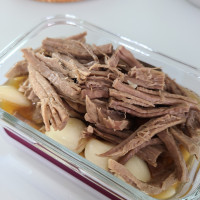 7hp***************************scoreIt became soft.2021-03-25 13:07
7hp***************************scoreIt became soft.2021-03-25 13:07 -
674*****scoreIt's so good that I'm enjoying beef jangjorim these days Thank you.2020-09-22 17:24
-
- Bulgogi Recommended recipe
-
-
1
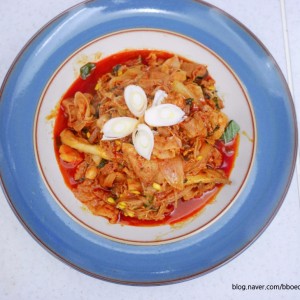 Jongwon Baek Bean sprout bulgogi golden recipe rice thief~4.89(63)
Jongwon Baek Bean sprout bulgogi golden recipe rice thief~4.89(63) -
2
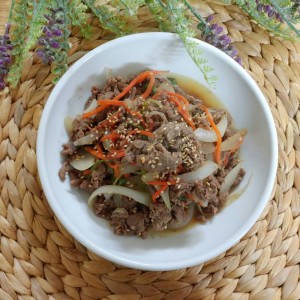 [Live Information Service] Awesome restaurant beef bulgogi golde4.89(45)
[Live Information Service] Awesome restaurant beef bulgogi golde4.89(45) -
3
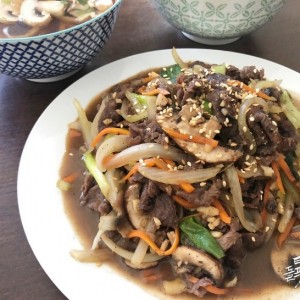 Making bulgogi. The charm of sweet and salty5.00(47)
Making bulgogi. The charm of sweet and salty5.00(47) -
4
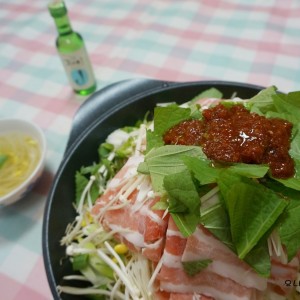 Home-cooked meal Baek's recipe for bean sprout bulgogi with Jong4.76(21)
Home-cooked meal Baek's recipe for bean sprout bulgogi with Jong4.76(21)
-
- chicken Recommended recipe
-
-
1
 Making kkanpung chicken with leftover chicken4.88(8)
Making kkanpung chicken with leftover chicken4.88(8) -
2
 Super simple chicken leg chicken (feat. air fryer)4.75(8)
Super simple chicken leg chicken (feat. air fryer)4.75(8) -
3
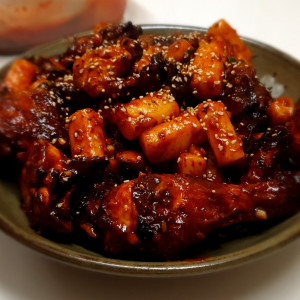 Imitating ZICOBA chicken 100%4.93(247)
Imitating ZICOBA chicken 100%4.93(247) -
4
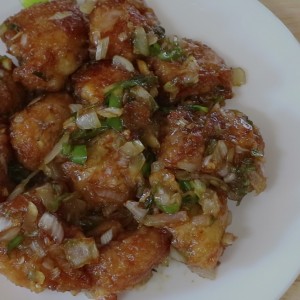 Cooking using leftover chicken! Making "Kkkanpung Chicken"4.95(19)
Cooking using leftover chicken! Making "Kkkanpung Chicken"4.95(19)
-
